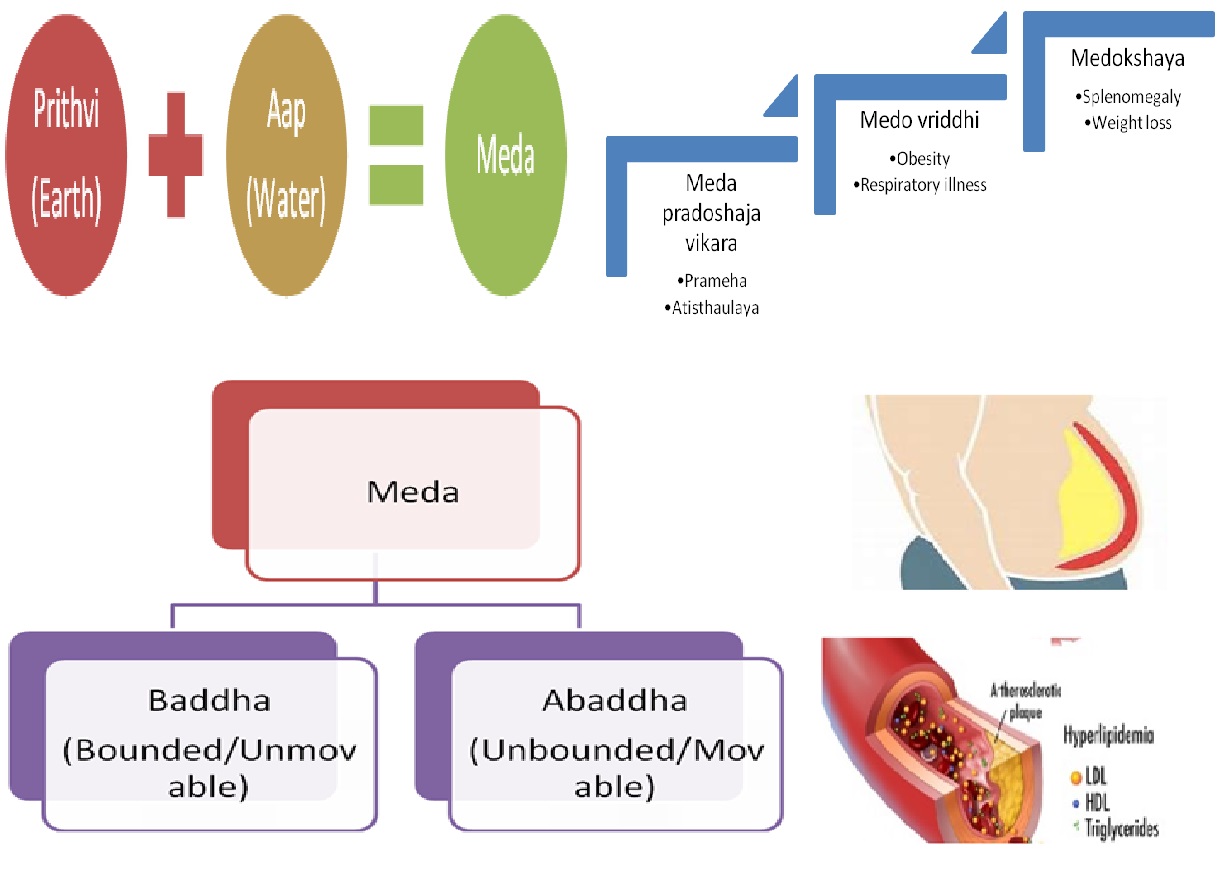Study of the Human Physiological Aspect of all Component of Medo Dhatu
DOI:
https://doi.org/10.47070/ayushdhara.v11i1.1497Keywords:
Medodhatu, Medodhatu Vikriti, Physiology, SnehatwaAbstract
According to Ayurveda, human physiology is dependent on the balance of Dosha, Dhatu, and Mala. Dhatus are regarded to be one of the body's most fundamental functioning and structural components. According to Ayurveda, human physiology consists of seven primary Dhatus. Medo Dhatu ranks fourth among the seven Dhatus. Lipids are discussed in terms of Sneha Dravya in Ayurveda, which includes Meda, Vasa, Majja, and so on. Sneha is the essence of our bodies. Acharya Sushruta states that the human body is made up of Snehasara, the most Vishuddhatara form of Sneha, and that Prana is dependent on it. Meda is mostly found in Udara, although it is also known as Sarakta Meda in Anu (little) Asthi and Majja in Sthoola (big) Asthi. Mamsa contains a pure form of Meda known as Vasa. Although these three are the most visible Sneha sites, Meda Dhatu is given special attention because of their relevance in lipid metabolism and participation in the development of numerous metabolic illnesses such as Medoroga and Prameha. The present review article focused on all physiological component of Medodhatu and its role in maintaining the physiology.
Downloads

Downloads
Published
Issue
Section
License
Copyright (c) 2024 AYUSHDHARA

This work is licensed under a Creative Commons Attribution-NonCommercial-ShareAlike 4.0 International License.


